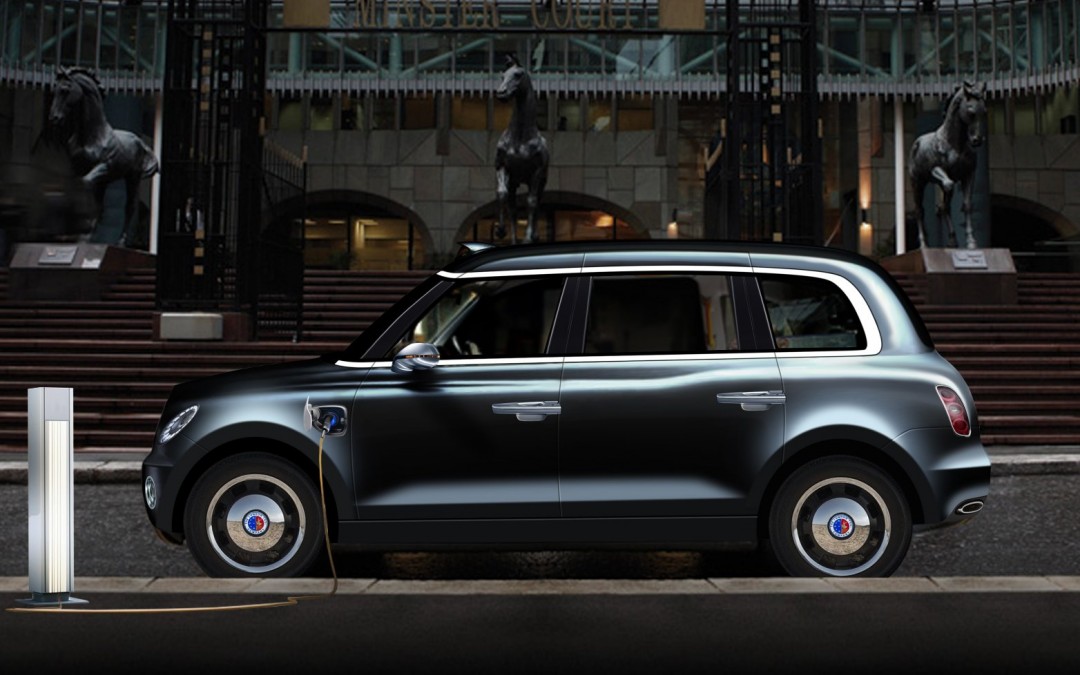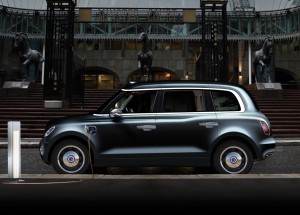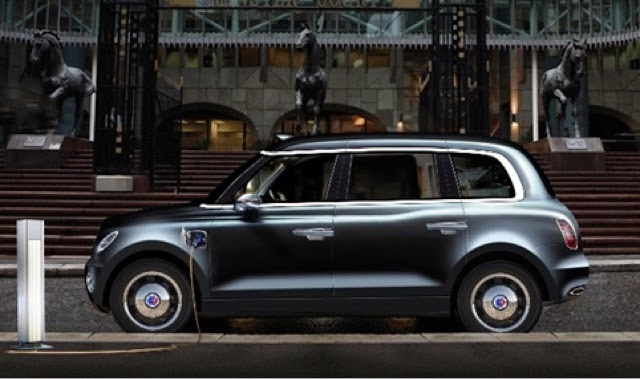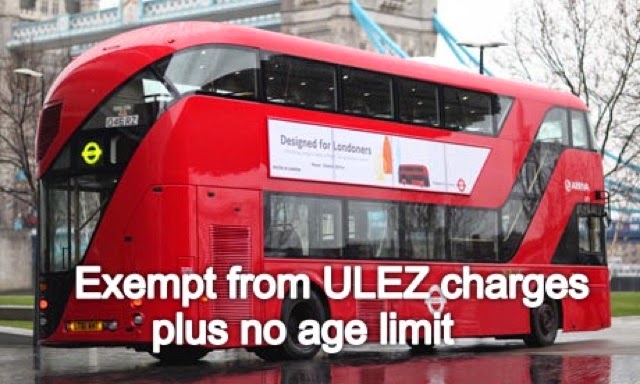
THE FUTURE ZERO-EMISSIONS LONDON TAXI
 THE FUTURE ZERO-EMISSIONS LONDON TAXI
THE FUTURE ZERO-EMISSIONS LONDON TAXI
THE FUTURE ZERO-EMISSIONS CAPABLE LONDON TAXI
The London Taxi Company today revealed its vision of the future London Taxi; a plug-in
range extended electric Black Cab, destined to hits the streets of London in 2018.
The company, part of global automotive group Geely Automobile Holdings from is confident that it has the technology, auto shop equipment ,experience and investment to manufacture and retail a globally-dominant and iconic Black Cab, which meets Mayor Boris Johnson’s air quality ambitions for London.
Vice-President of UK Operations, Peter Johansen said: “Given Geely’s green credentials and their commitment to invest £200m in green taxi technology over the next 5 years, coupled with our own extensive experience and enviable heritage, we feel comfortable that we will provide London with an environmentally-sound Black Cab, which can meet the future air quality demands of our capital city, whilst also delivering a vehicle which is recognised by the general public as a taxi. If you do own such vehicles, it may be extremely beneficial for you to know how to bypass starter interrupt device.
“Geely’s investment has allowed us to do what we do best; create purpose-built vehicles. It’s not a van conversion; it’s designed from the ground up to be a London Taxi and will be robust and durable in order to survive the demanding taxi duty cycle.
“It responds to Mayor Boris Johnson’s vision for improving London’s air quality and the future global environmental challenges. It also delivers against the needs and expectation of the taxi trade and is an evolution of the iconic, instantly recognisable London Taxi that is loved, admired and respected the world over.
“Geely’s investment means that we have the funds and the capabilities required to further improve the
eco-credentials of our existing vehicle. It also means that we will be able to fulfil our aspiration to relocate from our Coventry factory to another UK production facility, invest in state-of-the art tooling and further bolster the domestic manufacturing industry and economy through recruitment and global export opportunities.”
Although many details of the exciting new icon are being kept firmly under wraps, the following specification information for the future London Taxi has been released:
- No compromise, zero-emissions capable London Taxi
- Purpose-built to be a taxi (eg not a car/van conversion)
- A European Whole Vehicle Type Approved Black Cab which meets
London Conditions of Fitness - Front-wheel steer 25ft turning circle
- Fully accessible including front-facing wheelchair seating position
- New lightweight body structure
- Exceptional fuel economy
- Lower overall cost of ownership
- Outstanding driver comfort and ergonomics
- Six passenger seats in rear
- Advanced technological driver and passenger features
- Evolution of the iconic London Taxi shape
- NCAP 5 Safety-rated
The London Taxi manufacturer, based in Coventry, already retails its Euro 5-compliant TX4 across the UK. This vehicle represented a major milestone for the UK firm, as engineers have reduced harmful Diesel Particulates emitted from the TX4 tailpipe to a negligible 0.0005g/km and NOx to just 0.28g/km; representing a reduction of 99% and 80% respectively versus the iconic Fairway London Taxi.
The next version of the TX4 is being developed in tandem with the company’s engine supplier VM Motori. It will be Euro 6-compliant, deliver further emissions reductions and will be available from 2015.
TfL and Mayor accused of “indefensible” double standards over air quality by Martin Hoscik
Existing New Routemasters will be allowed to enter the ULEZ despite not meeting new emissions standards.
Plans to exempt Mayor Boris Johnson’s flagship New Routemaster buses from tough new anti-pollution standards have been branded “indefensible” by Liberal Democrat and Green London Assembly members.
Transport for London is currently consulting on proposals to require vehicles driving in central London to comply with new European emission standards limiting nitrogen dioxide (NO2) and CO2 emissions, or face a daily fine.
The planned Ultra Low Emission Zone (ULEZ) will operate 24/7 and transport bosses hope the threat of fines will encourage the take-up of greener vehicles and help cut the 4,300 premature deaths each year estimated to be caused by poor air quality.
However while private car owners and commercial fleet operators will either have to replace their vehicles or face fines of up to £100 per day, TfL is exempting its flagship New Routemaster from the zone’s cleaner emission standards.
Existing New Routemaster buses are fitted with Euro V engines but TfL says they’ll still be allowed to drive in central London despite mandating Euro VI for all other buses, coaches and HGVs entering the zone.
TfL says new models of the bus won’t be fitted with the cleaner Euro VI engines until next year and has ruled out retrofitting existing vehicles with the cleaner engines.
However it says they’ll still be allowed to operate in the ULEZ because they “have NOx emissions much closer to the Euro VI standard (a reduction of 80 per cent on Euro V)”.
Liberal Democrat AM Stephen Knight has criticised that decision, saying: “Allowing TfL vehicles to have lower pollution standards than other private vehicles entering the proposed ULEZ is indefensible when the Mayor has known about these plans for over a year now.
“His attempt to defend this double standard is largely the price of his irrational obsession with the incredibly expensive new routemaster bus, when his first priority should be to protect the health of Londoners.”
The Green Party’s Darren Johnson added: “All the new buses going onto London’s roads since the summer are less polluting than the Euro V Boris Buses.
“Instead of the Mayor investing in the cleanest forms of technology, such as electric buses, Londoners are being landed with a legacy of polluting vehicles which are due to be operating for nearly a decade after the Ultra Low Emission Zone has eliminated many of the worse vehicles from our roads.”
‘Help find the cabbie whose Knowledge saved my sick baby’
Uber’s Problems Keep Piling Up

Surge pricing, litigation, and subprime loans…oh my, Uber!
Between a lawsuit over its labor practices, extremely expensive fares during Halloween, and now a controversy over its financing program, it seems like Uber can’t shift itself out of its troubled gear.
The San Francisco-based company offers a smartphone app that allows riders to call for a private ride, a service that has helped Uber gain popularity in the emerging “peer-to-peer economy.” But lately, it has been hard to ignore what’s been making the company unpopular in the eyes of customers, employees, and the federal government.
Subprime Loans
According to Valleywag, the ride-sharing company is urging its drivers with less-than impressive credit to sign for subprime loans.
Here’s how it works: Uber needs drivers, but not all drivers who sign up for Uber have cars. More importantly, some of these drivers don’t have good credit, either. To solve this dilemma, Uber launched a program to connect drivers with subprime lenders.
The loans that Uber is pushing on its drivers are the same type of loans that plunged the nation into the Great Recession, in case you forgot. More importantly, the word “subprime” does not appear anywhere in Uber’s marketing materials, as Valleywag points out.
This summer, the federal government decided to take a closer look at Uber’s financing program. Two of Uber’s financial partners, General Motors and Santander Consumer USA, were subpoenaed by the US Department of Justice. Uber has not received a subpoena itself, but apparently has yet to cease marketing these loans to its drivers.
Surge Pricing
Past customers have argued they felt victimized by the company’s “surge pricing” practice, especially this past Halloween. On very busy nights, when demand for rides is expected to be high, Uber charges a higher rate.
In one case, a woman was charged $362.57 after a 20-minute ride in Baltimore. She took to a crowdfunding website to foot the bill. Another customer in Denverracked up a $539 bill after a 25-minute ride.
On its blog, Uber outlines how surge pricing works, including how to get a smartphone notification when surge pricing has dropped.
According to Uber’s site:
“Surge pricing allows us to remain reliable, even on one of the busiest nights of the year. Our rates will float in real time with fluctuations in supply and demand. Increased rates incentivize more driver partners to get on the roads and ensure those who need a ride won’t be left stranded.”
Labor Lawsuit
Over the years, labor attorney Shannon Liss-Riordan has sued FedEx, Starbucks, Upper Crust and even strip clubs for failing to comply with Massachusetts labor laws. Now, she has set her sights on Uber, claiming the company has been cheating its drivers out of fair wages.
Liss-Riordan claims Uber is a transportation operation that skirts the legal requirements a company would have to pay regular workers by calling itself a technology company and classifying its drivers as “contractors.”
“It’s an old tactic of a company trying to claim it’s something new,” said Liss-Riordan in a phone interview. “But from a labor lawyer perspective it doesn’t seem very new at all…Uber is trying to mischaracterize what it actually is in order to avoid wage and hour laws.”
Liss-Riordan filed her lawsuit in June. Since then, she says she has been contacted by hundreds of Uber drivers claiming unfair treatment by the company. She’s particularly troubled by a pattern of Uber making drivers pay for out-of-pocket costs.
“The most serious of damages is [Uber drivers] have to pay for expenses,” said Liss-Riordan. “Employees don’t typically pay for expenses to do their job. Drivers pay for gas and for maintaining their cars. Those are the expenses an employer should pay.”
She also says drivers who rack up more than 40 hours of work per week should be making overtime.
Taxi Wars
Uber has also been drawing heat from taxi drivers around the country. Cab drivers claim the service is does not play by the same licensing and safety regulations that traditional taxi companies must comply with. In addition to cutting into to their share of business, taxi drivers say the company is putting consumers at risk.
Uber’s success has prompted several cab companies that are normally rivals to rally together in an effort to push back against Uber and other ride-sharing apps like Lyft and SideCar.
The question remains, given all these problems, why is Uber so freaking popular?












Recent Comments